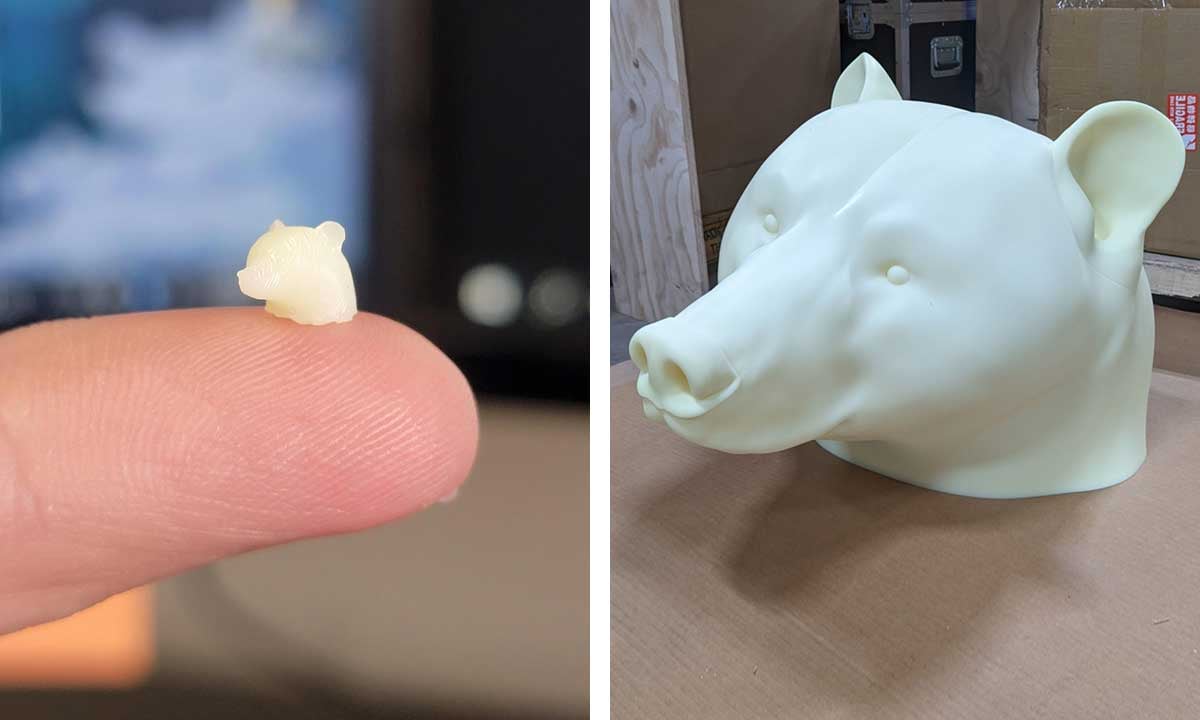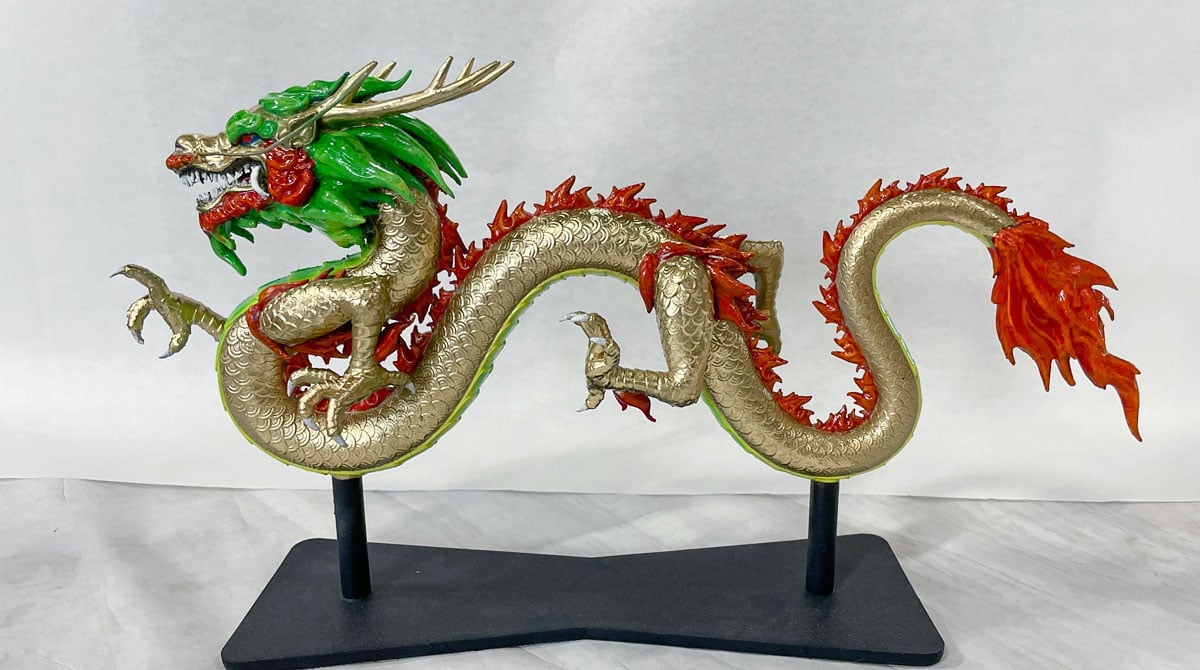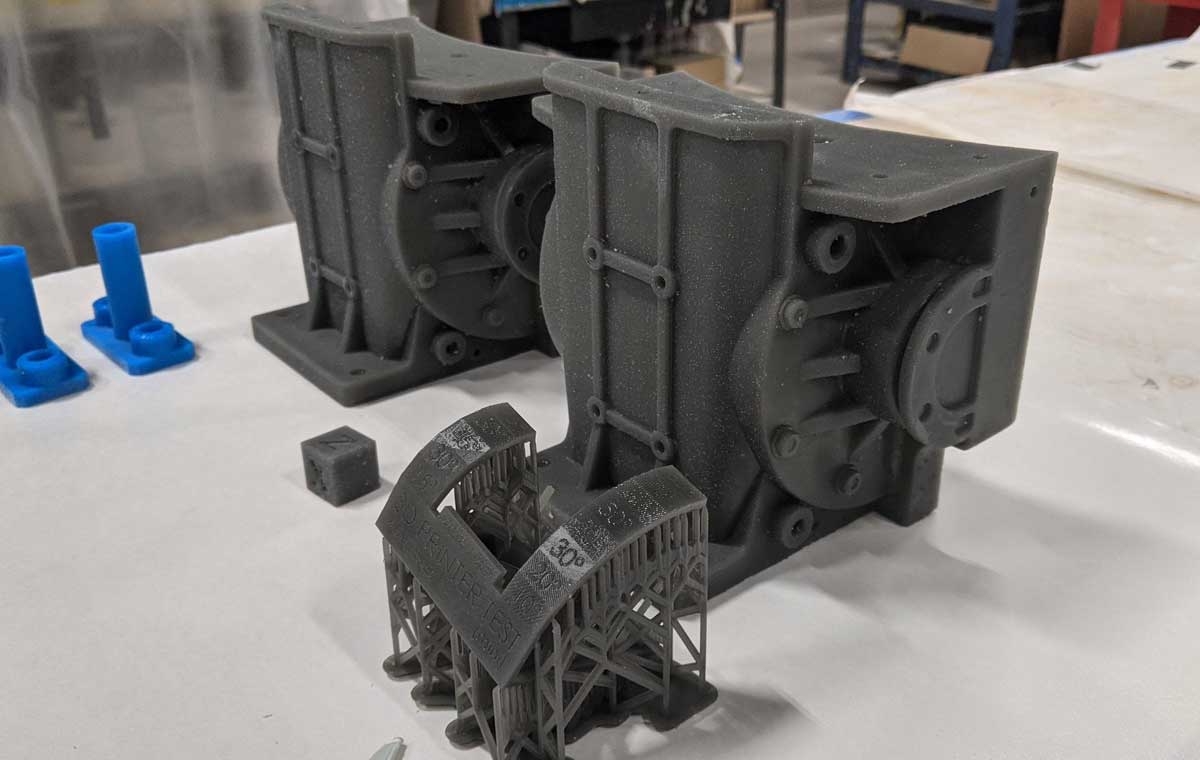Stereolithography printers, usually referred to as “SLA printers” have many advantages over other types of 3D printers, including their use of liquid resins as raw materials. The process is fascinating. Following a computer-generated pattern, an SLA printer aims a UV laser at select points in the liquid resin. This light cures just the targeted point, solidifying it. Resin printing creates many opportunities for artists to develop intricate three-dimensional objects, from clear statues to flexible molds. The many available types of resins for 3D printing means there’s a resin for every type of project.
How do artists and makers choose which resin is best for fabricating their 3D prototypes, sculptures, custom parts, and other 3D objects?
In this article, we explain how SLA printers use resins and how to choose the right type of liquid resin for your next 3D printing project.

What is resin 3D printing?
Three-dimensional (3D) printing is an additive computer-aided manufacturing (CAM) process that constructs objects by binding and solidifying the material with which the object is made. Unlike subtractive construction methods that remove unwanted material or substrate to reveal the final piece, 3D printing fabricates the object by assembling it bit by bit.
Resin 3D printing is a type of 3D printing that assembles objects from liquid resin.
What are resins?
Resins are sticky stuff that may exist in solid or liquid form at room temperature, may occur naturally or be synthesized from various chemicals, and are usually polymers. This makes them tend to chain together and contributes to their stickiness. Liquid tree sap and its alt form, amber, are examples of natural resins. In manufacturing, we often think of resins in their final form of plastics. But other materials may be used to create resins. The resins used for 3D printing are synthetic photopolymers that are viscous at room temperature and solidify when cured using light.
What kinds of 3D printers fabricate objects using resins?
Digital light processing devices (DLP) and SLA printers use resins to produce 3D objects using a slightly different curing process. A DLP printer cures an entire layer of the object simultaneously.
SLA resin printers can produce more complex, detailed pieces because of the precision with which the resin can be cured using laser targeting. Each section of a piece is solidified before it is connected to the next. Depending on their type, SLA printers may cure the parts of an object within the resin reservoir by moving from the top down or the bottom up. Modern industrial versions of these 3D printers can accommodate a build volume of 1 cubic meter or larger.
The fabrication process used by SLA printers differs from fused deposition modeling (FDM) printers which use extruded strands of filament or wire to create an object layer by layer. Filament-based printers enable makers to assemble prototypes and rough objects quickly. However, the use of thermoplastic wire as the medium for construction limits the ability to fabricate pieces with fine details.
SLA printers can transform resin into mini- and large-scale 3D objects without losing details or accuracy.

Resin printers allow creators to adjust their builds until their objects are not too big, and not too little, but just right.
What types of resins do fabrication companies use to manufacture professional-grade 3D objects?
The type of resin fabricators use to create a 3D object depends on several factors including the intended use of the item and the level of detail desired for the finished object. Among the resins that are most commonly used for industrial 3D printing projects are the following:
- Standard SLA resin. Basic photopolymer resins are affordable and produce smooth, cleanly finished pieces with good details. However, when cured, these resins can be brittle. These resins are best suited for limited-use prototypes, models or objects that won’t undergo significant handling. In other words, standard SLA resins are best for projects where looking good is all that matters.
- ABS-like SLA resins. ABS-like SLA resins are stiffer and harder, yet less brittle than standard resins, and are the resin of choice for many professional-grade and industrial uses.
This resin is called ABS-like because it emulates many of the properties of acrylonitrile butadiene styrene (ABS) plastic, which is a type of thermoplastic polymer. ABS is a popular filament material for FDM 3D printing. ABS-like SLA resins are notable for producing objects with clean, detailed surfaces and good impact resistance. - Tough SLA resins. Tough SLA resins, as you might have guessed, are formulated for resiliency. These resins are suitable for building prototypes that will need to undergo repeated stress testing and for parts that will be exposed to lots of action once put into use. Some resin manufacturers classify their ABS-like resins as tough resins. Other manufacturers offer separate resins with differing degrees of durability and strength.
High-temperature resins are another type of resin designed with resilience in mind. In the case of high-temperature resins, they are formulated to withstand high heat conditions without breaking down. Tough or high-temp resins are useful for manufacturing and industrial applications where conditions can be severe and durability is critical. - Draft or rapid resins. These resins prioritize speed over durability. Draft resins let makers and artists build rapid prototypes with minimal curing and post-production finishing. According to Formlabs, the manufacturer of Draft Resin, large parts can be manufactured using its rapid resin in an SLA printer up to 10 times faster than when using an FDM printer.
- Medical SLA resins. Medical and dental resins are biocompatible and suitable for long-term exposure to human (or animal) tissue. Medical and dental SLA resins used to craft medical equipment must withstand heat sterilization and other stressors without degrading.
- Flexible SLA resins. These resins are available in clear or colored varieties. They differ from other types of resins because the material retains the ability to bend after curing. Exposure to light solidifies the resins, but not completely.
Some flexible resins will become increasingly rigid if they are exposed to continual UV light after fabrication. So flexible resins are best used for items that will not have a long lifecycle or can be shielded from light sources. - Elastic or rebound resins. Remember Stretch Armstrong? Elastic or rebound resins remain stretchable after curing. This resin can be used to create parts with spring or objects that deliver a cushioned or elastic tactile experience.
- Transparent or clear SLA resins. Transparent resins may be clear or tinted. When cured, a transparent resin will resemble glass or acrylic. Objects 3D printed using transparent or clear resins can be used to create amazing effects but will need careful finishing to achieve the perfect shine. Clear or transparent resins may be treated to appear translucent, like frosted glass.
Flexible, elastic, clear, or transparent resins may be manufactured for standard, industrial, or medical uses.

This 3D-printed maquette of a traditional Chinese dragon was a prototype for a much larger 3D-printed sculpture installed at a casino restaurant.
How to choose the best resin for your 3D printing project?
No single resin is perfect for every project. To select the best resin for your plans, start by identifying which resins your 3D printer can use. Then consider the following questions about your project and the 3D object or objects you plan to build:
- What are you building your 3D-printed items for? What jobs will the objects have to do and for how long?
- What are the minimum and maximum dimensions of the items you plan to build?
- How much detail do your objects need to incorporate? Will you produce basic solid shapes or intricate openwork designs?
- What type of finish do you want the pieces to have? Will you cover the objects with other materials or will the base material need to be finished?
- Do you want to build objects that are opaque, transparent, or translucent? Solid or hollow?
- Does the object need to be durable and stable enough for an industrial-grade or high-traffic display or exhibition?
- How accurately does the finished object need to be when compared to your design file? Some resins may shrink more after curing than others.
- How quickly do you need to produce your 3D object and what volume of objects do you need to produce?
- What is the total budget for your project and what portion of that budget can you allocate to your 3D printed items?
Call on 3D printing experts to help you choose the best resins and streamline your 3D printing projects
Access to SLA printers that accommodate a variety of resins and can produce items quickly and at scale is a huge benefit for businesses, makers, and artists who have big concepts they want to test and produce. However, not everyone has an SLA printer or the expertise to leverage these devices.
When you work with a full-service 3D printing design and fabrication company, you gain access to tools, knowledge, technology, and a trusted advisor who can ensure your project runs smoothly from start to finish. If you’d like to learn more about 3D printing and the amazing ways artists, brands, creators and makers use this technology, schedule a no-obligation strategy session with Bridgewater Studio today. We’ll tell you about our 3D printing and other fabrication technologies, learn about your project, and discuss the best way to bring your ideas to life.


.png)
.png)
.png)







